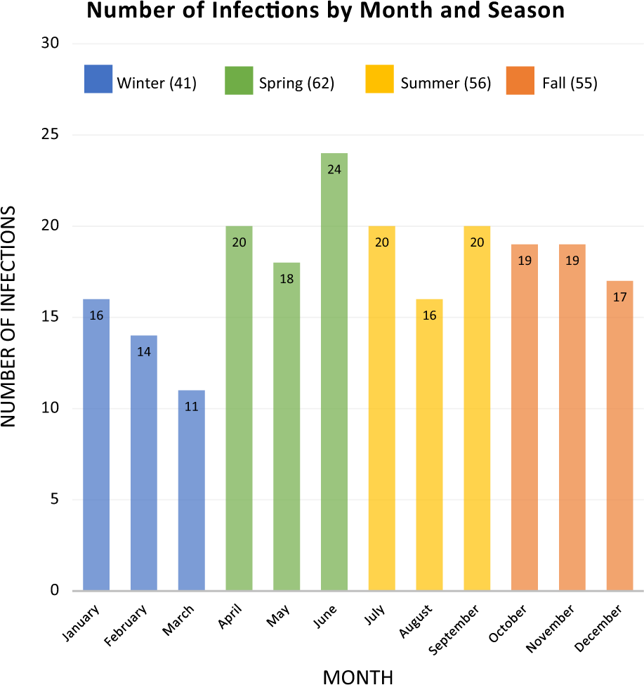当前位置:
X-MOL 学术
›
Int. J. Impot. Res.
›
论文详情
Our official English website, www.x-mol.net, welcomes your feedback! (Note: you will need to create a separate account there.)
Multicenter investigation on the influence of climate in penile prosthesis infection.
International Journal of Impotence Research ( IF 2.6 ) Pub Date : 2019-05-01 , DOI: 10.1038/s41443-019-0148-5 Martin S Gross 1 , Annah J Vollstedt 1 , Mario A Cleves 2 , Sidney Glina 3 , Stanton C Honig 4 , Paul Perito 5 , Peter J Stahl 6 , Mariano Rosselló Gayá 7 , Edward Gheiler 8 , David J Ralph 9 , Tobias Köhler 10 , Doron S Stember 11 , Rafael Carrion 12 , Pedro Maria 13 , William O Brant 14 , Bruce Garber 15 , Arthur L Burnett 16 , J Francois Eid 17 , Gerard D Henry 18 , Ricardo Munarriz 19
International Journal of Impotence Research ( IF 2.6 ) Pub Date : 2019-05-01 , DOI: 10.1038/s41443-019-0148-5 Martin S Gross 1 , Annah J Vollstedt 1 , Mario A Cleves 2 , Sidney Glina 3 , Stanton C Honig 4 , Paul Perito 5 , Peter J Stahl 6 , Mariano Rosselló Gayá 7 , Edward Gheiler 8 , David J Ralph 9 , Tobias Köhler 10 , Doron S Stember 11 , Rafael Carrion 12 , Pedro Maria 13 , William O Brant 14 , Bruce Garber 15 , Arthur L Burnett 16 , J Francois Eid 17 , Gerard D Henry 18 , Ricardo Munarriz 19
Affiliation

|
The purpose of this study is to investigate the relationship between inflatable penile prosthesis (IPP) infection, time of year, climate, temperature and humidity. This is a retrospective IRB-approved analysis of 211 patients at 25 institutions who underwent salvage procedure or device explant between 2001 and 2016. Patient data were compiled after an extensive review of all aspects of their electronic medical records. Climate data were compiled from monthly norms based on location, as well as specific data regarding temperature, dew point, and humidity from dates of surgery. Rigorous statistical analysis was performed. We found that penile prosthesis infections occurred more commonly in June (n = 24) and less frequently during the winter months (n = 39), with the lowest number occurring in March (n = 11). One-hundred thirty-nine infections occurred at average daily temperatures greater than 55 °F, compared to 72 infections at less than 55 °F. The incidence rate ratio for this trend was 1.93, with a p-value of <0.001. Humidity results were similar, and fungal infections correlate with daily humidity. Infected implants performed in the fall and summer were over 3 and 2.3 times, respectively, more likely to grow Gram-positive bacteria compared to implants performed in spring (p = 0.004; p = 0.039). This was consistent across geographic location, including in the Southern hemisphere. We found trends between climate factors and IPP infection like those seen and proven in other surgical literature. To our knowledge these data represent the first exploration of the relationship between temperature and infection in prosthetic urology.
中文翻译:

气候对阴茎假体感染影响的多中心研究。
这项研究的目的是调查可膨胀的阴茎假体(IPP)感染,一年中的时间,气候,温度和湿度之间的关系。这是IRB批准的一项回顾性分析,对2001年至2016年间接受救助程序或设备外植的25家机构中的211例患者进行了分析。对患者的电子病历进行了全面审查后,才汇编了患者数据。气候数据是根据位置,每月标准以及来自手术日期的有关温度,露点和湿度的特定数据编制的。进行严格的统计分析。我们发现阴茎假体感染在6月更为常见(n = 24),而在冬季月份则较少(n = 39),在3月发生的次数最少(n = 11)。每天平均温度高于55°F时发生139例感染,而温度低于55°F时有72例感染。该趋势的发生率比率为1.93,p值<0.001。湿度结果相似,真菌感染与每日湿度相关。与春季进行的植入相比,在秋季和夏季进行的感染植入分别超过3倍和2.3倍,更容易生长革兰氏阳性细菌(p = 0.004; p = 0.039)。这在包括南半球在内的所有地理位置上都是一致的。我们发现气候因素和IPP感染之间的趋势类似于其他外科文献中所看到和证明的趋势。据我们所知,这些数据代表了人工泌尿外科中温度与感染之间关系的首次探索。
更新日期:2019-05-16
中文翻译:

气候对阴茎假体感染影响的多中心研究。
这项研究的目的是调查可膨胀的阴茎假体(IPP)感染,一年中的时间,气候,温度和湿度之间的关系。这是IRB批准的一项回顾性分析,对2001年至2016年间接受救助程序或设备外植的25家机构中的211例患者进行了分析。对患者的电子病历进行了全面审查后,才汇编了患者数据。气候数据是根据位置,每月标准以及来自手术日期的有关温度,露点和湿度的特定数据编制的。进行严格的统计分析。我们发现阴茎假体感染在6月更为常见(n = 24),而在冬季月份则较少(n = 39),在3月发生的次数最少(n = 11)。每天平均温度高于55°F时发生139例感染,而温度低于55°F时有72例感染。该趋势的发生率比率为1.93,p值<0.001。湿度结果相似,真菌感染与每日湿度相关。与春季进行的植入相比,在秋季和夏季进行的感染植入分别超过3倍和2.3倍,更容易生长革兰氏阳性细菌(p = 0.004; p = 0.039)。这在包括南半球在内的所有地理位置上都是一致的。我们发现气候因素和IPP感染之间的趋势类似于其他外科文献中所看到和证明的趋势。据我们所知,这些数据代表了人工泌尿外科中温度与感染之间关系的首次探索。


























 京公网安备 11010802027423号
京公网安备 11010802027423号